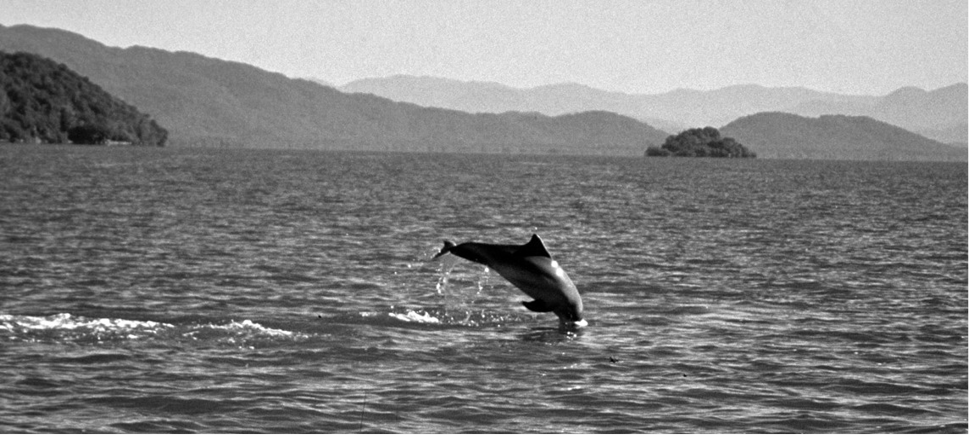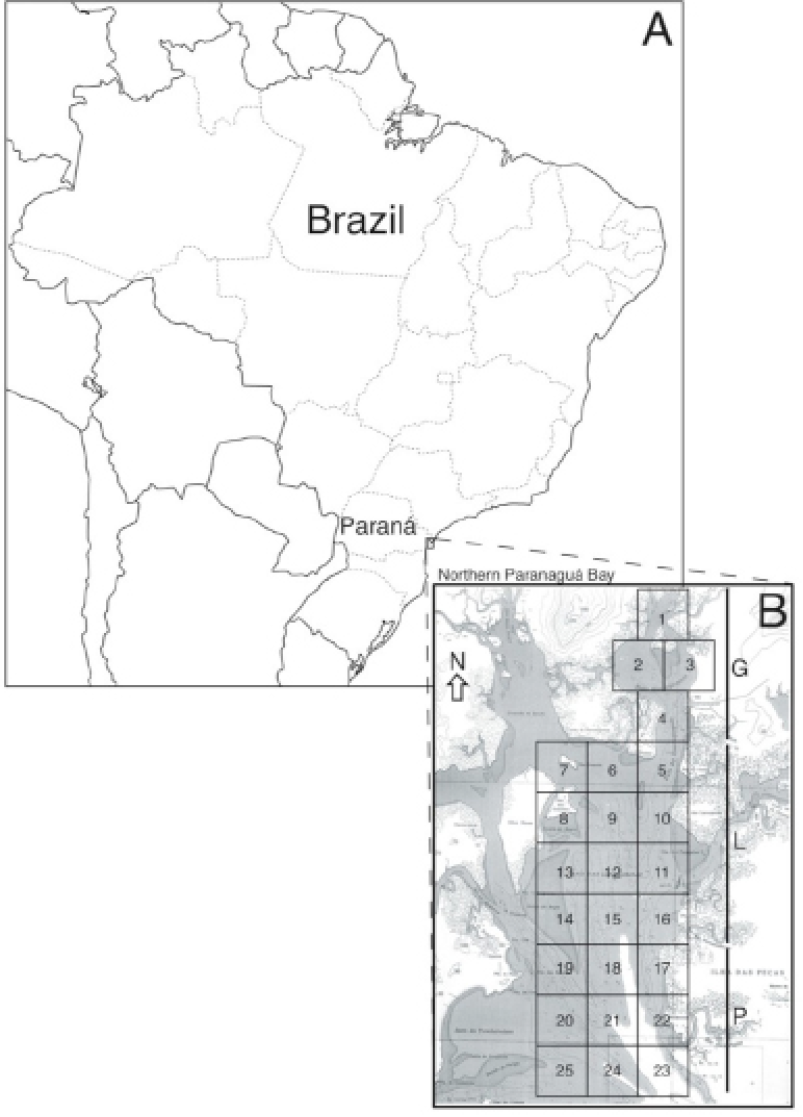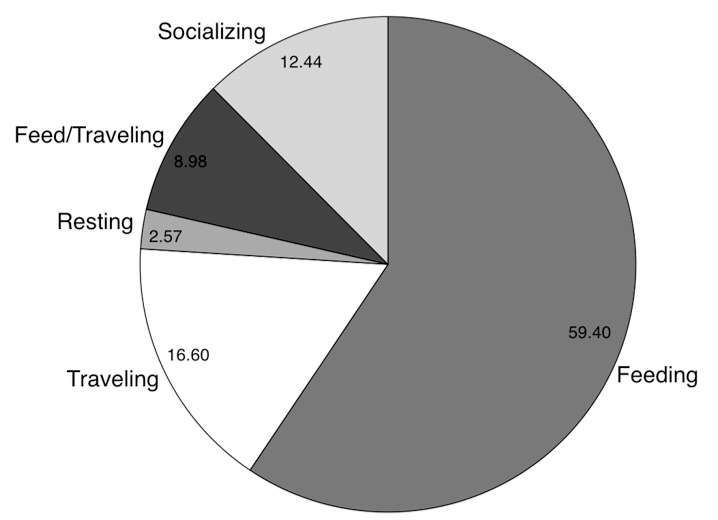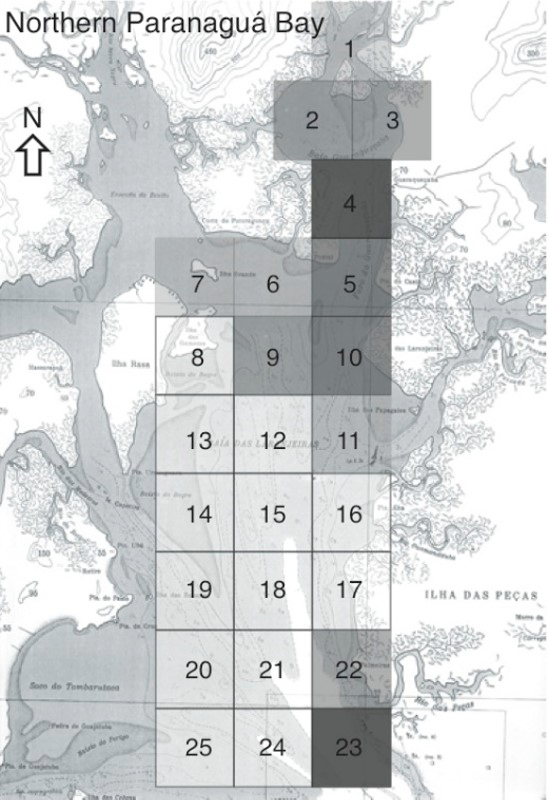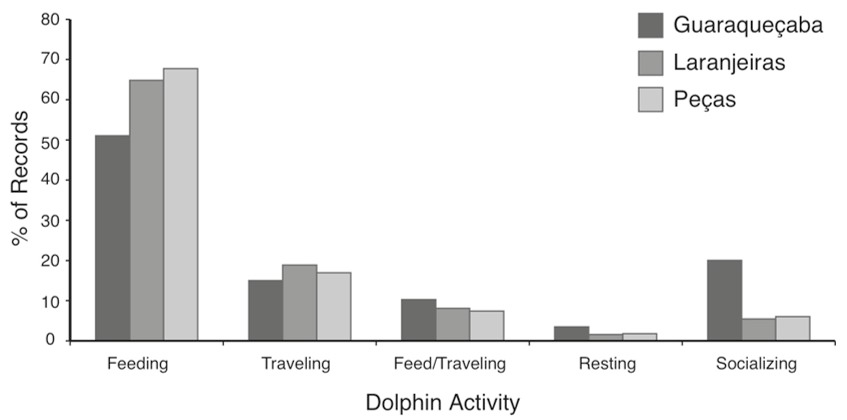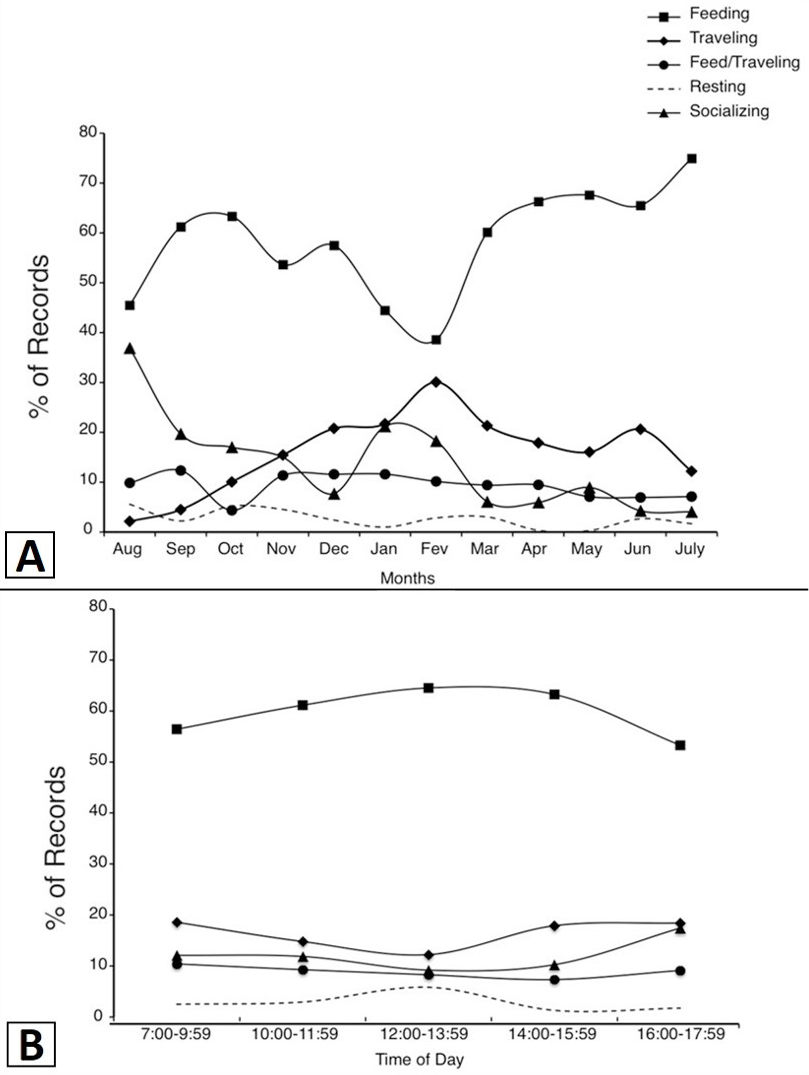Habitat Preference and Behaviour of the Guiana Dolphin (Sotalia guianensis) in a Well-Preserved Estuary off Southern Brazil
Habitat Preference and Behaviour of the Guiana Dolphin (Sotalia guianensis) in a Well-Preserved Estuary off Southern Brazil
Carolina A. Bonin1,2, Eric A. Lewallen2,3, Andre J. van Wijnen3, Marta Jussara Cremer4 and Paulo C. Simões-Lopes5*
A Guiana dolphin (Sotalia guianensis) is observed in Paranaguá Bay estuary, southern Brazil.
Study area maps. A, The general location of Paranaguá Bay estuary in Paraná State, Brazil, B, The northern portion of Paranaguá Bay estuary, where an area of approximately 100 km2 was surveyed for Sotalia guianensis habitat use. The area was divided as a grid; squares of ~ 3.2km2 were used to track dolphin group locations. G, Guaraqueçaba Bay; L, Laranjeiras Bay; P, Peças Island. Map adapted from publicly available Nautical Chart # 1820. Diretoria de Hidrografia e Navegação, Marinha do Brasil.
Total activity budget for S. guianensis in Paranaguá Bay estuary, southern Brazil. Data based on n=3,150 group sighting records, corresponding to 260 hours of direct dolphin observation.
Habitat preferences for S. guianensis in the Paranaguá Bay estuary. Squares on the map are shaded according to the percentage of dolphin group sighting records relative to the total for the study area. Darker to light shading on squares corresponds to percentage of records according to five categories: > 10%; 5-10%; 5-1%; <1% of total dolphin sighting records.
Dolphin group activity per sector (Guaraqueçaba, Laranjeiras and Peças) within Paranaguá Bay estuary. Note: socialization was significantly more frequently recorded in Guaraqueçaba Bay relative to the remainder of the study area (χ2= 13.18, DF=2, p= 0.001).
Temporal variation of S. guianensis activity in Paranaguá Bay. A, Month by month variation in dolphin activity. B, Diel variation in dolphin activity.







